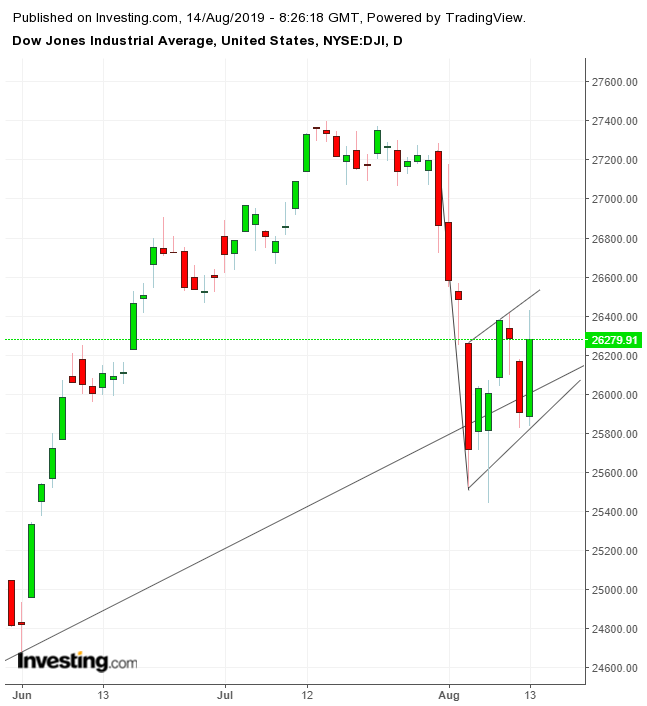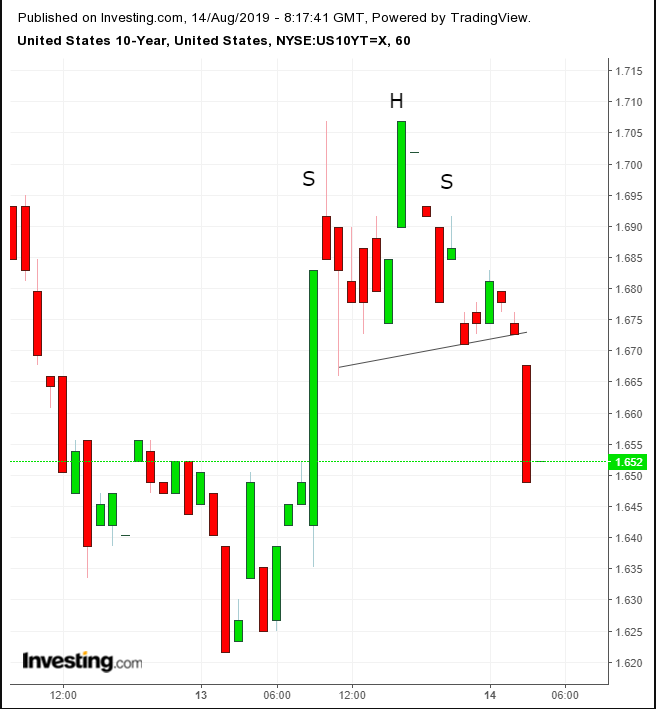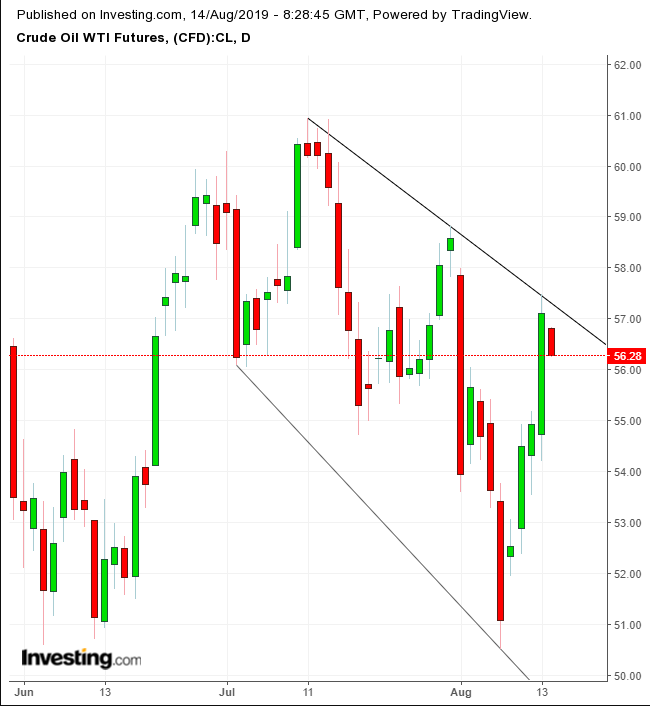- U.S. futures, European shares tumble on dismal economic data from China, Germany
- Yields edge toward lowest level since Oct. 2016
- Yen and gold rise, oil drops as lowest Chinese industrial output in 17 years reignites risk-off
Key Events
Treasury yields, European shares and futures on the S&P 500, Dow and NASDAQ 100 tumbled in unison this morning after worrying economic data from China and Germany overshadowed a pause in U.S.-China trade jitters, reawakening the specter of a global recession.
The STOXX 600 fell with banks stocks, with Deutsche Bank (DE:DBKGn) and Banco Comercial Portugues (LS:BCP) leading losses after Germany reported a 0.1% contraction in second-quarter GDP, from 0.4% growth in the first quarter, with a trade war-driven fall in exports as the direct culprit of the tumble.
The German data flop followed another key red flag from China, where both retail sales and industrial output readings vastly missed expectations—with the latter growing at the slowest pace in 17 years.
When the largest economy in the eurozone falls back into negative growth and a crucial economic indicator in the second largest economy in the world hits a near two-decade low, investors’ recessionary fears inevitably spike.
Global Financial Affairs
All these come a day after U.S. President Donald Trump delayed the 10% duties on $300bn of Chinese consumer goods and China confirmed it was staying on track for September talks, sending U.S. stocks to their biggest jump in two months.

Despite the much-celebrated rally, equities found resistance by the top of a bearish flag, which remained intact. Note, the flag develops right on the uptrend line since the Christmas-Eve selloff.

The VIX traded according to a pennant shaped consolidation above the levels of most of the year’s volatility since the aftermath of the December rout.
Today's reversal only highlights how unreliable extreme gains can be in this market environment.
China’s Shanghai Composite still managed to seal a 0.42% climb in the early Asian session, as investors clung onto Wall Street’s trade-relief rally.

Meanwhile, the yield on 10-year Treasurys erased all of yesterday’s gains, falling to one basis point away from the lowest level since Oct. 2016. Technically, on the hourly chart, rates may have completed a H&S top.
The yen pared a small portion of yesterday’s risk-on plunge. Gold also edged higher against a weakening dollar and a risk-off market.

After jumping the most since January on the apparent softening U.S.-China trade rhetoric, WTI slid on dismal Chinese data and a U.S. crude inventory buildup. Technically, the price hit the resistance of the falling channel top, where supply overcomes demand.
Up Ahead
- Companies releasing results include Jd.Com (NASDAQ:JD) and Alibaba (NYSE:BABA), Australia’s Telstra (ASX:TLS), giant retailer Walmart (NYSE:WMT), NVIDIA (NASDAQ:NVDA), Swisscom (SIX:SCMN) and the Danish brewer Carlsberg (CSE:CARLa) CSE:CARLb).
- Thursday sees the release of U.S. jobless claims, industrial production and retail sales data.
Market Moves
Stocks
- Germany’s DAX slid 1.2%.
- The MSCI Asia Pacific Index climbed 0.8%.
Currencies
- The Dollar Index declined 0.05%.
- The euro increased 0.1% to $1.1185.
- The onshore yuan jumped 0.4% to 7.014 per dollar.
- The British pound was little changed at $1.2062.
- The Japanese yen gained 0.4% to 106.32 per dollar.
Bonds
- The yield on 10-year Treasurys slipped four basis points to 1.66%.
- Britain’s 10-year yield was unchanged at 0.494%.
- Germany’s 10-year yield dropped one basis point to -0.62%.
Commodities
- West Texas Intermediate crude dipped 1.2% to $56.43 a barrel.
- Gold fell 0.1% to $1,500.38 an ounce.
- Iron ore increased 2% to $88.55 per metric ton.
